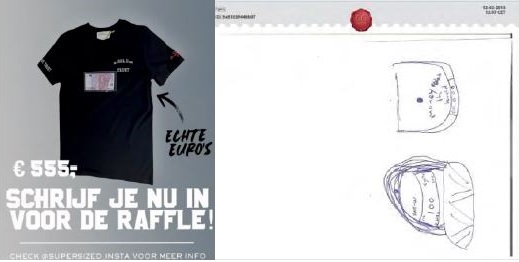Claimant submitted his idea, being ‘clothing with real money (banknotes) stitched onto it’ with CC Proof. He submits a drawing of a cap with a banknote on it together with the tagline: “Money rules the world”. When defendant organizes a raffle where a T-shirt can be won with a five-hundred Euro bill stitched onto it, claimant argues that this constitutes an infringement of his copyright, based on the drawing registered with CC Proof.
Court deals with this quickly. A mere idea cannot be protected and the submitted drawing has not materialized sufficiently. That does not constitute a copyrighted work. The claim is rejected.
Suppose an idea does work out, can it be smart to record it? Yes indeed. Many copyright cases are also often about when a work has been created. If a worked-out idea satisfies copyright requirements, it can be a good idea if there is independent proof from a third party when this idea was worked out. An i-Depot is one of the most commonly used forms for this, developped by the Benulux Office for Identical Property (BOIP).
The advantage is that BOIP is an independent public organisation (rather than a private one). An i-Depot will have a filing date and is then kept registrerd for 5 years. After this, the retention period can be extended indefinitely by 5 years. In principle, the work is kept secret, unless the creator wishes all or part of it to be made public (in order to sell it, for example, but this leaves the door open for people to get hold of the idea, so we advise against doing it this way).
Should an issue arise about since when an idea has been developed, the i-Depot can be a good solution to prove this. One more note: the fact that a work is registered as i-Depot says nothing about whether the submitted piece is copyrighted, that will be determined in court. It is really only a piece of evidence that the idea/work was submitted in this form at the time.

